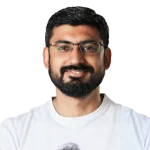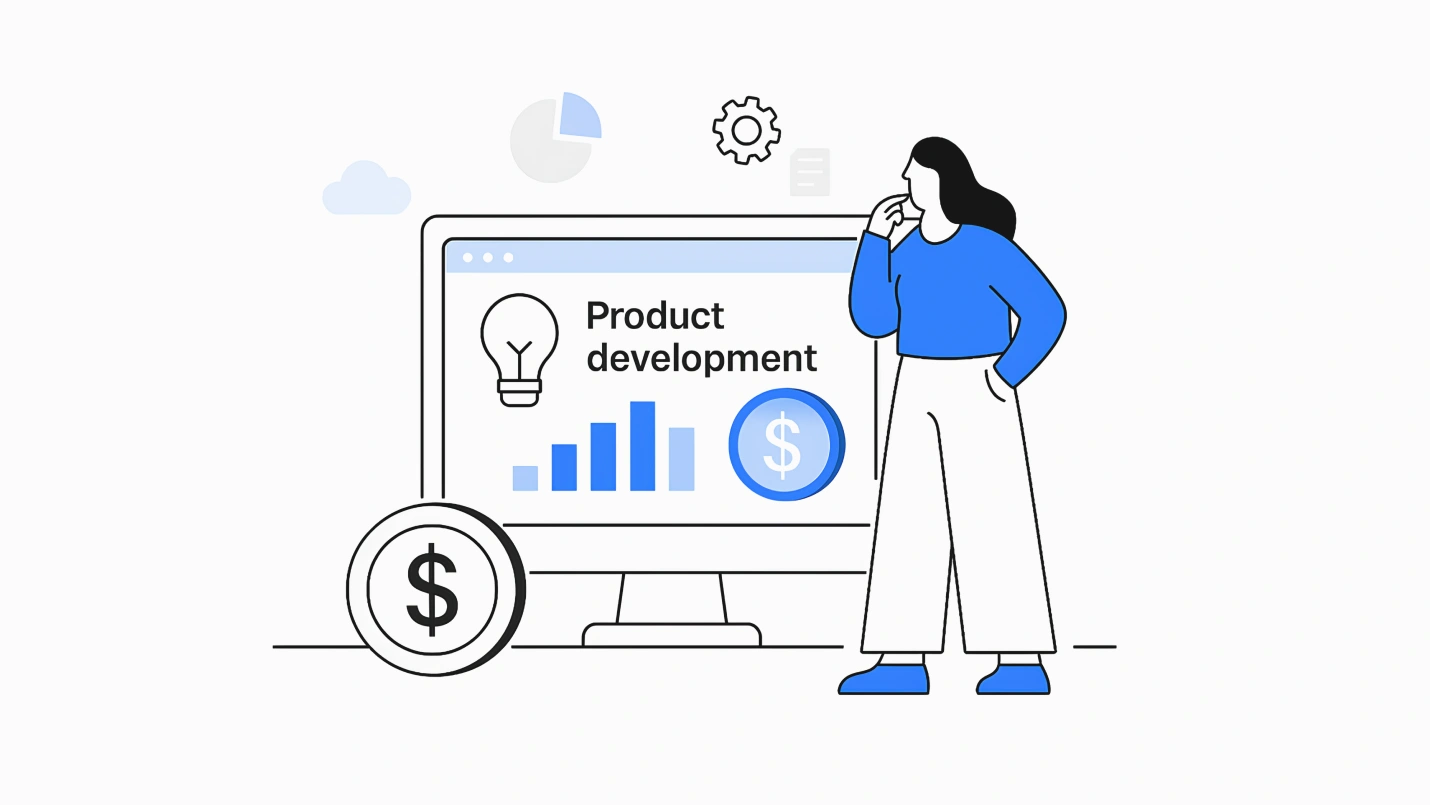Summary: To ace the competition and make your product stand out, you must focus on achieving the product-market fit, a sweet spot where you have figured out what your customers & market demand and built a product that meets those needs. Read on to learn how you can leverage the knowledge of product-market fit to build disruptive products that exceed customer expectations.
Achieving product-market fit doesn’t happen overnight. A lot of planning, market research, enhancements, and testing is involved. In simple words, product-market fit is not a 100-meters sprint but a marathon that requires a lot of planning.
If you do build a great experience, customers tell each other about that. Word of mouth is powerful.– Jeff Bezos
Hop in to learn everything you need to know about product-market fit, its relevance in product development, and how to build a product that meets the expectation of modern-day, demanding, customers.
What is Product-Market Fit?
Product-market fit means being in a good market with a product that can satisfy that market.— Marc Andreesen, Software Engineer who coined product-market fit
A product-market fit revolves around creating a product that fulfills your target customers’ needs, i.e., It has features that solve users’ problems.
It means if you want your product to achieve the product-market fit, prioritize the feature set before the minimum viable product (MVP) goes out in the market. Also, make sure to address all the problems the customers might face.
Here’s a visual representation of the topsy-turvy journey you can expect in the quest to achieve a product-market fit:
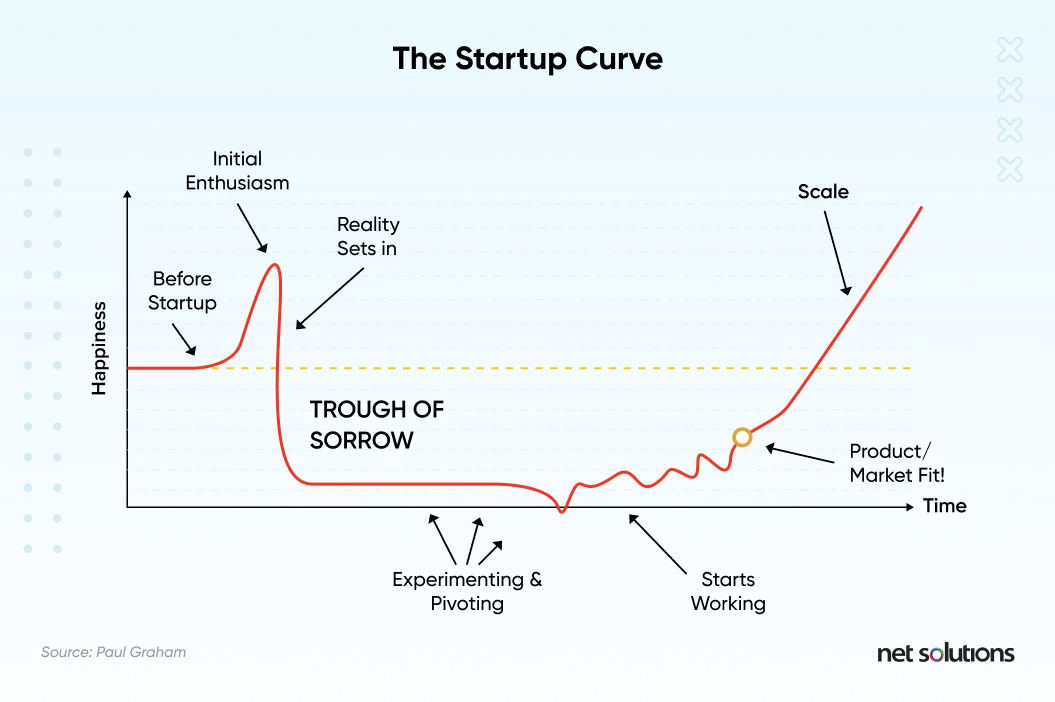
Product-Market Fit Examples
1. Netflix
An ideal product-market fit example can be Netflix. People wished that they could get rid of the late fees they paid at DVD rental stores. Netflix proved to be a product-market fit by mailing the DVDs to the users on a subscription basis and allowing them to keep the DVDs without any time constraints.
With the DVD trend fading, Netflix again rewired the business model by shifting to the subscription-based model for the streaming service, thus providing a better and cheaper way for entertainment. Netflix modified the business model several times to meet the customers’ changing demand, setting a perfect example of what a product-market fit should be like.
2. Slack
Slack is a brilliant example of a brand that achieved product-market fit by anticipating market demands and quickly adapting to it.
Touted as one of the most popular communication tools, Slack originally started as a completely different idea. The founders were planning to develop a role-playing game, and they had developed Slack as an internal communication tool for the team.
However, they soon realized that there were plenty of role-playing games in the market. But nothing like Slack was out there yet. So, they scrapped the role-playing game idea and developed the communication tool. Today, Slack has around 10 Million users.
The example of Slack shows how you should not be afraid of shifting away from your original idea if you see a better opportunity for a product-market fit.

We respect your privacy. Your information is safe.
Why Does Product-Market Fit Matter?
Building a product without ensuring enough people are willing to pay for it is counter-productive. You will only waste your precious time and resources as there are chances that people may or may not use them. That’s why product-market fit is crucial if you want to launch a new product. In other words, achieving product-market fit is a win-win as customers get what they want, making them pay for it, which drives conversions.
Besides, a product-market fit also lets you know:
- What features do you need to include in your product to ensure it meets their expectations?
- Who is likely to care about your product and why?
- How can you grab your potential customer’s attention and make them buy your product?
- What steps can you take to turn your customers into loyal brand advocates?
In simple words, product-market fit helps you understand what needs to be done and gives you a competitive advantage over others.
Product-Market Fit Pyramid

A product-market fit pyramid is an actionable model for defining the product-market fit using the following five key components:
- Target Customer
- Underserved Needs
- Value Proposition
- Feature Set
- UX
Each component in the product-market fit pyramid is represented as a layer, and each layer is directly related to the levels above and below.
Here are a couple of ways in which the pyramid can help:
- It can help us see how well the assumptions we make about our product resonate with the market
- We can get our priorities right using the product-market fit pyramid. For example, without knowing the target customers and their underserved needs, we can’t build a product that serves them right
Overall, a product-market fit helps you strike a balance between your envisioned product and the market it will serve. As a result, you can build a product that solves users’ needs and meets market demand.
7 Ways to Determine a Product-Market Fit
You can measure product-market fit once you have launched your MVP. You’ll always know if you are making the right impact or not.
According to Marc Andreessen:
You can always feel when the product-market fit isn’t happening. The customers aren’t quite getting value out of the product, word of mouth isn’t spreading, usage isn’t growing that fast, press reviews are kind of “blah”, the sales cycle takes too long, and lots of deals never close.
For a better clue, here are some product-market fit metrics that you should be aware of.
1. One-to-One Customer Interviews
Communicating directly with the product users should be given precedence when measuring product-market fit. Ask them their feedback and whether they like the product or not. Some of the platforms where you can gather feedback include:
- Social media channels such as LinkedIn, Facebook, Instagram, or Twitter
- Public Trello Boards where you can share your product and your features and allow users to comment so that you can see how they receive your product
2. Social Media Surveys
Social media surveys are the best way to gather honest feedback on your product as they are quick and easy to access. But this only works when you know your persona well. For example, Facebook surveys have a feature that enables users to include their options as an answer, which gives fascinating insights.
Another good reason to use social-media surveys is that users don’t have to go out of their way to fill out the survey forms. Besides, surveys also help customers get used to your presence, initiate communication with you, and share what they expect from your product.
3. Ad Campaigns
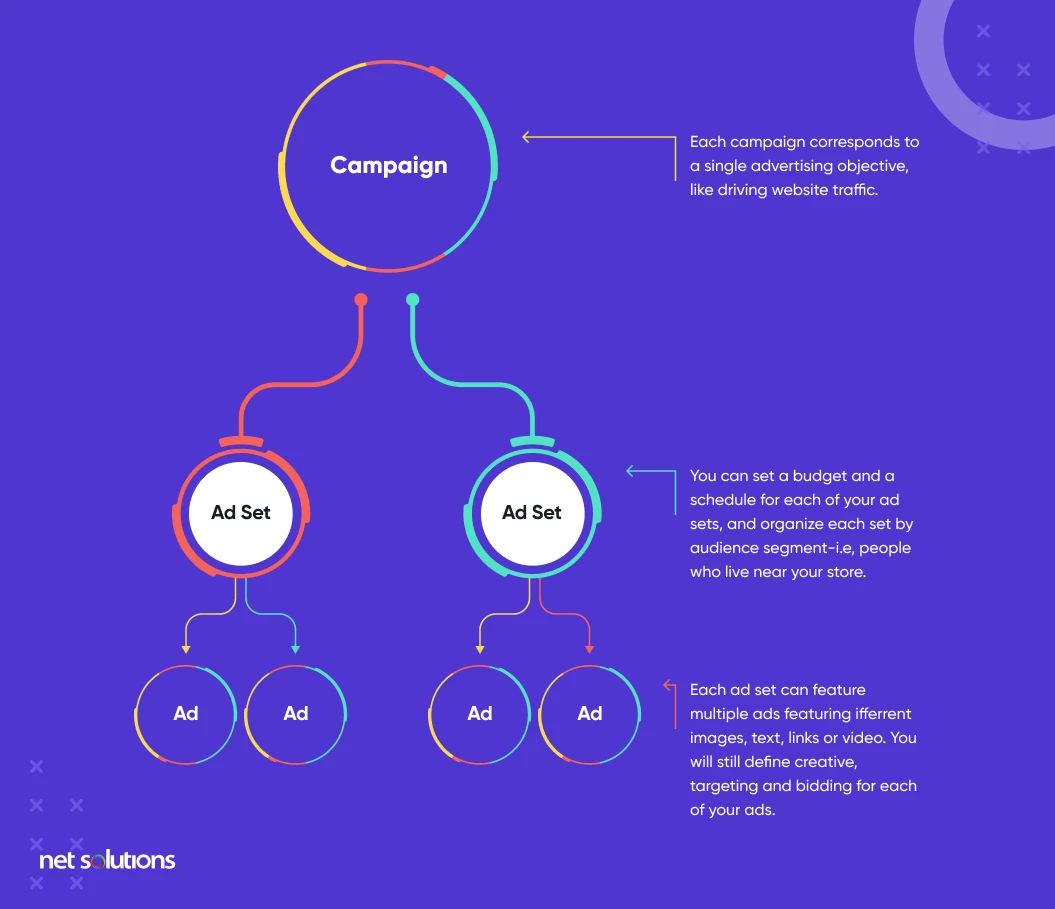
Ad campaigns are an incredible way of running market validation surveys. Google and Facebook are the platforms that enable you to drill down demographics to the specific target audience. This gives you a chance to run a low-fidelity test to see what is most appealing about your product.
You can run ads to see how many users land on your product’s landing page and engage with your product. There are even tools to analyze clicks, engagement, and other vital behaviors.
However, it would help if you kept in mind that there is cut-throat competition in the search market. So, running an ad campaign might not give you a lot of exposure. Still, it can be good to see whether your product is a market fit or not.
4. Crowdfunding
Crowdfunding is another popular way to determine the product-market fit as to whether it will do well in the market or not. Websites like IndieGoGo or Kickstarter offer a great platform to test whether your product meets user expectations or not. Moreover, you can gather funds on these platforms to support further product iterations.
Here are a few things you must keep in mind leveraging crowdfunding to determine the product-market fit:
Actively track your backers and see what they say about your product. They might have some brilliant ideas to offer. Don’t be disheartened if you don’t receive the desired response from backers. Keep revising your idea until you find your sweet spot. Ensure you support your crowdfunding campaign with a compelling narrative and effective explainer videos. You can also throw in some rewards/incentives to attract backers.
Crowdfunding can be an efficient strategy to determine product-market fit. Not only does it give you access to continuous feedback from customers, but it also gives you access to interested adopters who can later help you reach a wider audience through word-of-mouth.
5. Reach out to your Customer Support Team
Seek a report from your customer support team to get a glimpse of the complaints and queries you have got so far. This will help you understand and improvise to ensure you achieve a product-market fit.
6. AARRR Framework — Pirates Metrics
AARRR or pirates metrics framework is one of the best ways to measure product-market fit. AARRR means — Acquisition, Activation, Retention, Referral, and Revenue. Here’s what each of them implies in regard to your product:
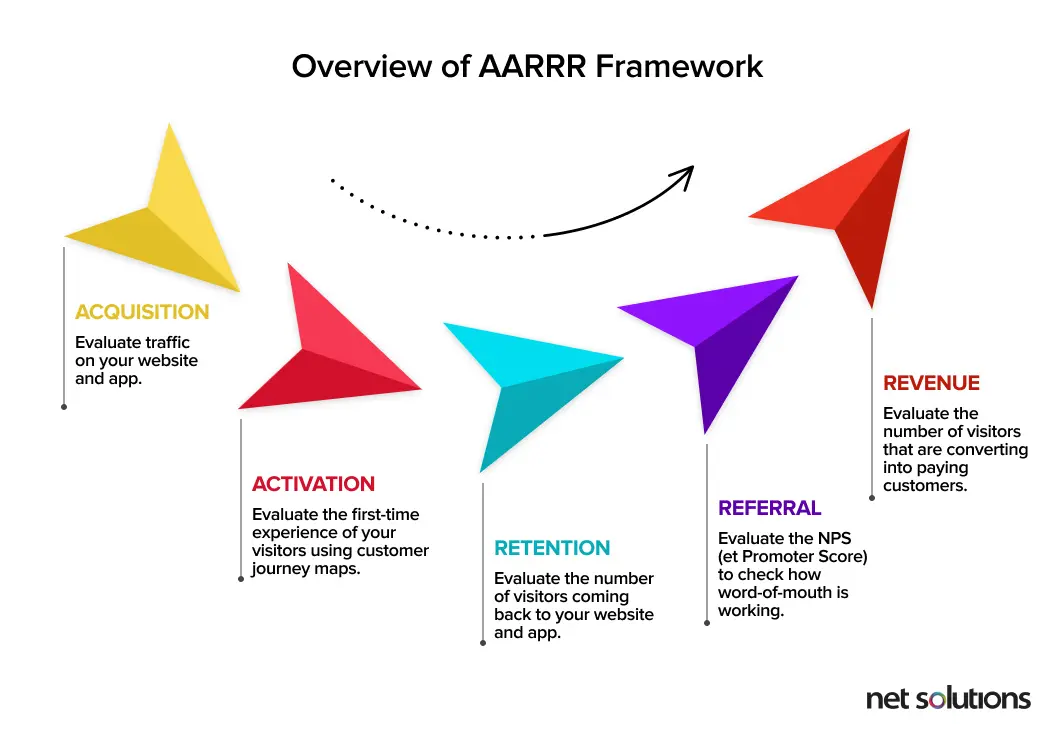
- Acquisition: How is the traffic on your website or app?
- Activation: How is the first-time experience of your visitors? Are they able to get from point A to point B without any roadblocks on the way? You can accomplish this task by drawing customer journey maps to know how their interaction is going with the user interface.
- Retention: Are the users coming back to your website and app?
- Referrals: Is there an increased traffic after you receive a bunch of users? This will help you understand whether the word-of-mouth is working or not. You can do this by introducing referral programs from early-on and using Net Promoter Score (NPS) that can range from 0 to 10. The better the inclination towards 10, the better the promotion.
- Revenue: Are the users converting into customers, i.e., are they paying for your product?
7. The SaaS Rule of 40
The SaaS rule of 40 says that your growth rate and profit margin should add up equal to or greater than 40%. This rule practically applies to later stages since your launch. Measuring the percentage in the early stages can lead to false assumptions as achieving growth and profitability both take time.

Myths Around Product-Market Fit
Many myths around product-market fit keep doing rounds in the product development domain. Here are some of them:
Myth 1: Product-Market Fit is a One-Time Event
Fact: Product-market fit is an ongoing activity. User needs are likely to change with time, and if you do not improvise with time, you are likely to lose it to a competitor.
Myth 2: Relying on Cost Per Acquisition Metric is All you Need to Drive Growth
Fact: Cost per acquisition (CPA) is the ratio of how much you spend on sales and marketing in a certain period and the number of customers that sign-up for the product in the same time bracket. The lower the ratio, the better.
But, with time, you’ll realize that you need to upscale your investments on different marketing and sales channels to beat the competition. Moreover, besides the early adopters, convincing the real buyers can get tricky, which, in turn, can lead to increased churn rates. So, do not rely on CPA alone when concerned about your product’s success.
Myth 3: Achieving Product-Market Fit Ensures Product Success
Fact: Achieving product-market fit is not everything, as many products fail even when they have achieved the PMF. There are other factors that need to fall in place when concerned about a product’s success, which is discussed in detail in the section that follows.
Myth 4: Product-Market Fit is a Spontaneous Process
Fact: Contrary to popular belief, product-market fit doesn’t happen spontaneously. Instead, it involves a long process of trial and error. You need to study your potential customers and the market in-depth, carefully plan the MVP, and perform a lot of testing. Sometimes, the process may take years.
Myth 5: You Know When You Achieve Product-Market Fit
Fact: This belief is partially true. While there are a few obvious signs like the increasing demand for products, acquiring new customers, and the increase in revenue – these things often take time to unfold.
Myth 6: Once You Achieve Product-Market Fit, You Can’t Lose It
Fact: Product-market fit is an iterative process. It means you will have to continue working to maintain it over time. Otherwise, you may lose it.
If Product-Market Fit Prevails, Why Do Products Fail?
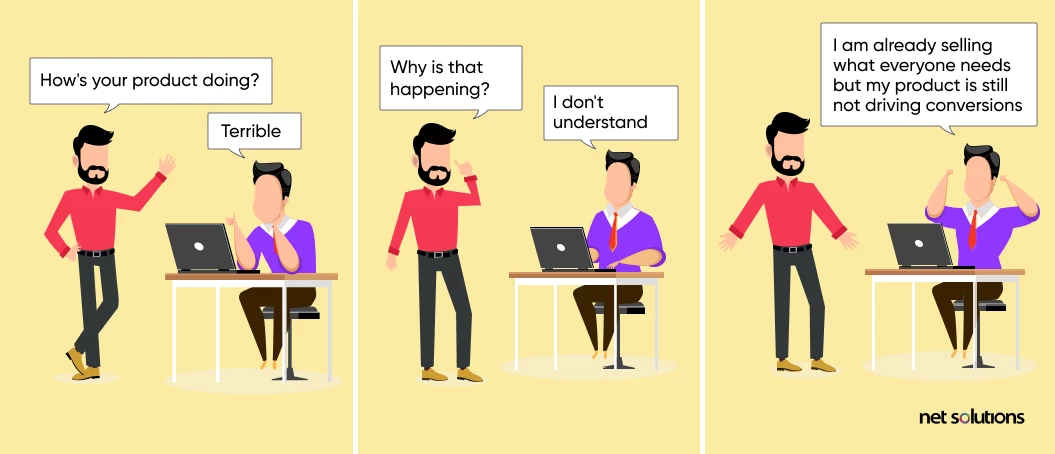
Sometimes, good products fail despite being product-market fit compliant, i.e., the demand-and sales metrics that should have elevated takes a downturn. So, why does this happen?
The reason most products fail is that sometimes companies tend to overlook other elements that can contribute towards ensuring a product’s success.
For instance, Agile Development methodology is a predefined process that follows a set approach — requirements gathering, design, development, Agile testing, deployment, and maintenance. If the Agile Development team leaves any of the processes behind, the product will not meet its vision, which would further lead to its failure.
Products also fail despite being product-market fit when your team is not capable enough to properly execute their development. No matter how brilliant your product idea is, if you lack the skills, the result will be a sloppy product that fails to meet the customer’s needs.
Sloppy implementation, feature creep, and lack of quality control are some other factors that lead to product failure.
In simple words, your product is like a baby. You create it, nurture it, make it product-market fit compliant to ensure it does good when it steps outside the doorsteps of the organization. Overlook any factor and chances are it may miss the mark.
What Lies Beyond Product-Market Fit?
Achieving product-market fit is not everything. Other elements such as — the balance between function and feeling, mastering unit economics, and marketing should hold precedence too. Here are the elements that need to be taken care of to ensure a product’s success:

1. Balance Between Function and Feeling
Two essential elements that ensure a product’s success — function and feeling.

a) Function
Defines the user experience of the product – is it easy to navigate through the product’s interface and access the features that the user is there for?
Offering a solution is one thing. But offering easy access to the solution is another. Your product should offer a great UI/UX to ensure that its functionality falls right into place.
Focus on the following parameters to master functionality:
- Findability: Customers should be able to locate features they know already exist quickly
- Discoverability: Customers should be able to locate and access new or not-yet-known features
- Intuitiveness: Customers should understand how to use the product without much reasoning or brainstorming
- Responsiveness: You should be able to deliver what the customer needs or what they request without any delay
b) Feeling
Feelings are associated with human emotions related to the product, i.e., what does your product make a customer feel? This is a part of emotional marketing, where emotions are used to target the customers so that they notice you and eventually buy from you.
The end goal is to evoke positive emotions to drive conversions. The right way to do it starts with understanding the effect of different emotions on humans.
Here is how to ensure that your product evokes the right and positive emotions:
- Focus on making the problems (that your product solves) relatable by leveraging storytelling
- Create advertising campaigns and inspiring communities that target the right emotions. According to Neuroscience Marketing, out of 1,400 successful advertising campaigns, those with purely emotional content performed about twice as well (31% vs. 16%) as those with only rational content
- Use the right color combinations as a part of the UI. Here are some emotions associated with different colors
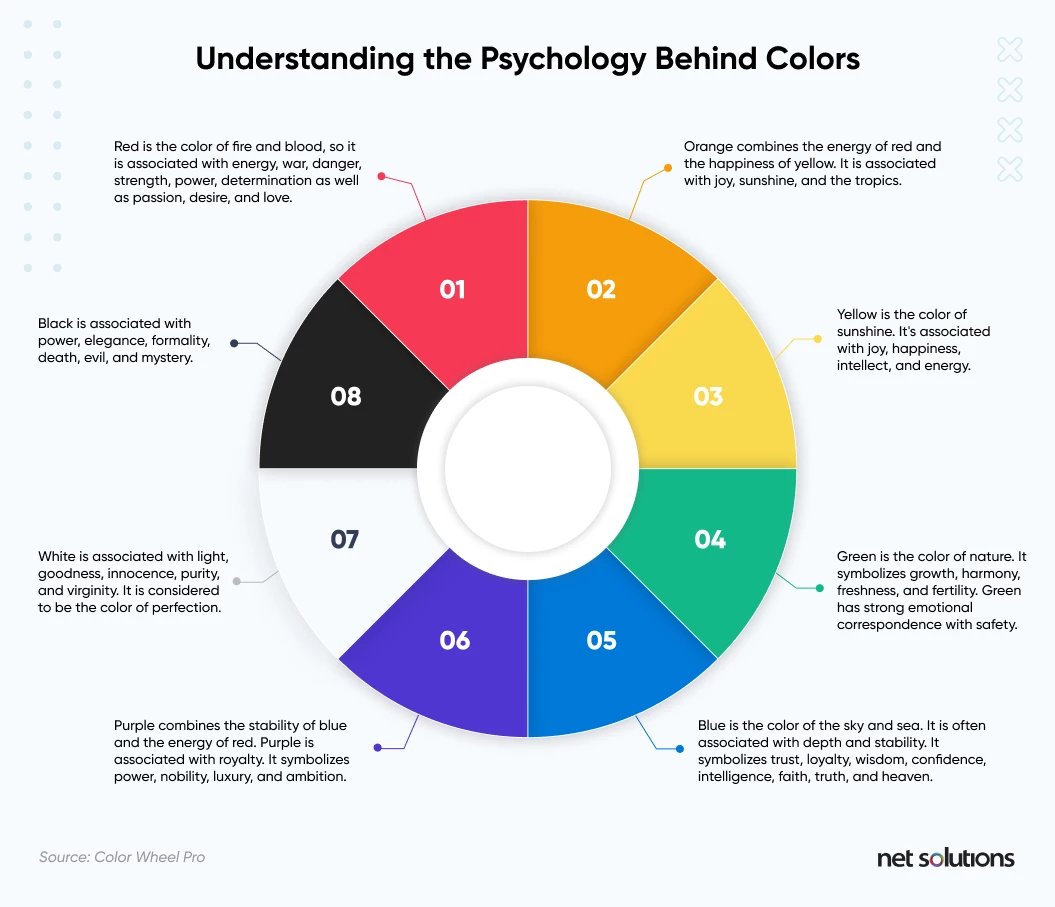
In all, we can say:
Positive Feeling + Seamless Functioning = Product-Market Fit
2. Unit Economics
Unit economics manages the lifetime value that your business will extract from a customer over what you spend on acquiring them.
It is wrong to think that if you master product-market fit, the unit-economics fit will automatically fall in place. This is not the route that you take towards attracting economies at scale.

For a business to be profitable, Customer Lifetime Value (LTV) should always be greater than Customer Acquisition Cost (CAC), i.e., LTV > CAC. It might not look very clear at first. So, let’s understand this with an example.
A brand spends a little money on every customer, and they think that it will be recovered in the long run as you work on ensuring loyalty.
However, there is always a new entrant that offers the same product or a better product at a low price to position itself in the market. So once you hike up the price to recover your investments, you’ll soon find customers shifting loyalties.
Take the example of Uber. Here is the chain of events to explain unit economics in the simplest terms:
- The idea of a ride-sharing app was so unique that it gave birth to a new buzzword: “uberisation.” Uber had a fair monopoly and a good customer base owing to their affordable payments and free ride offers
- As Uber started to make it big, its prices started to surge to ensure profitability
- But, with the launching of Lyft, the entire game changed. People started riding with Lyft, which had comparably low pricing
- The ride-hailing service Uber fails to make reasonable profits as the competitive wars, and the customer to-and-fro loyalties tend to be the biggest roadblock. This is the vicious cycle that continues to exist
Here’s how to handle unit economics that goes beyond ensuring product-market fit:
- Maintain customer lifetime value greater than the customer acquisition cost. Do not invest profusely — there is always a competitor to take your place
- Ensure that your USP is irreplaceable. Even if a competitor steps in, focus on repurposing and upgrading to stay one step ahead
- Strategize smartly around the marketing campaign while spending less
3. Marketing
Product-market fit is about your product being in demand. To create demand, you need to develop a positive brand image in the customer’s mind, i.e., brand positioning. Marketing aims to ensure leads get through the last stage of the sales funnel.

Here are the marketing strategies that can help:
a. Identify Buyer Personas
If you have the right product that solves a problem for A, but you are pitching to B, whose requirements are different — marketing failure is evident. It is similar to inviting a friend to watch a rom-com when they only love thrillers. They’ll not join or will leave halfway through when they realize it’s not something that intrigues them.
Therefore, identifying the buyer personas, i.e., your target audience across digital channels, is the first step towards driving sales.
For instance, if you have a B2B product, you will have to pitch CXOs, CMOs, or CEOs. On the other hand, for a B2C product, the audience will be end-users. In both cases, tell about how your product will solve their problems in the parlance they can relate to.
b. Clearly Communicate your USP (Unique Selling Point)
You already have a product that solves a problem for your customers. The key here is to identify that one feature that makes your product different from your competitors.
This one feature or user story will be your hero pain point that your marketing team needs to focus on. Every marketing campaign should define the problems and represent the solution in the form of your product.
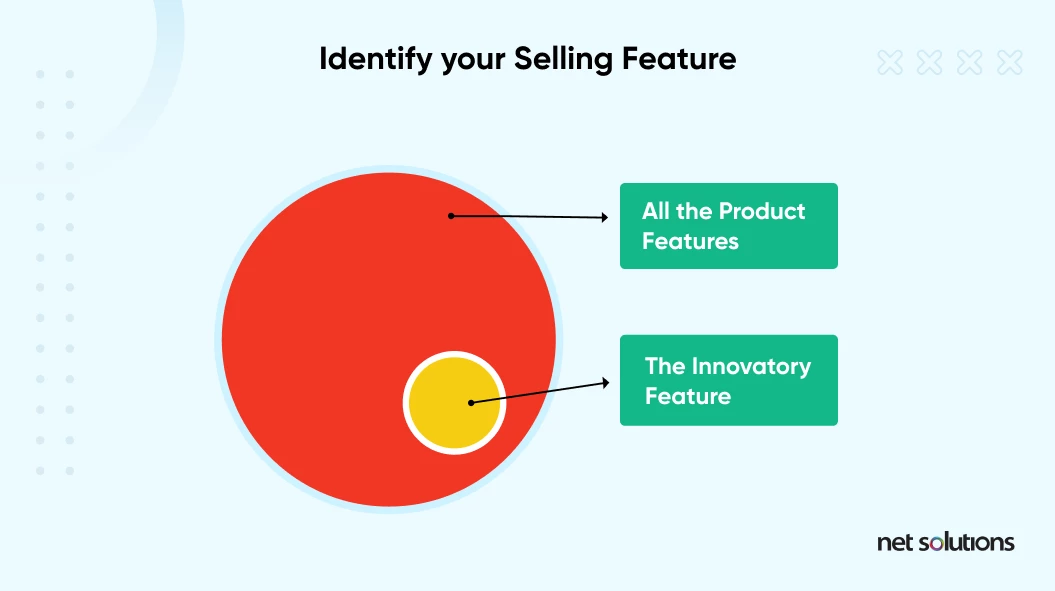
A rising issue with the sales pitch jumps in when businesses try to boast about what their product can do and fail at emphasizing how the product makes their lives easier.
In this case, conduct webinars, run Youtube tutorials, introduce landing page introductory videos, publish How-to blog posts, and leverage chatbots to make it easy for first-time users.
c) Write Copy that Sells
When marketing your product, do not focus on writing copy that promotes generalized pitching. Instead, focus on the product’s intent, i.e., who is it for, what problems does it solve, how does it solve them, and what are its upshots.

Frequently Asked Questions
The process of having a product-market fit and building a product should go side by side. Only when you’re aware of who your target customers are and what their needs are, can you build a product that meets their needs? Similarly, the market is continuously evolving and at times you may also need to evolve your product with it. So, both the processes should happen simultaneously.
To find your product-market fit, it’s always good to start with a hypothesis and keep an open mind. You will need it if you have to pivot to a model that has nothing in common with what you started with (like Slack).
Although, no single set of metrics can tell any business when it achieves product-market fit, here are a couple of metrics that can help you measure product-market fit:
Quantitative:
- NPS score
- Churn rate
- Growth rate
- Market share
Qualitative:
- Word of mouth: Customers talk about your products with others
- Increasing interest in your product among your target customers
It depends on a lot of factors, like the industry, your niche, your target customers, etc. However, you can achieve this during the first 2-3 years of the product launch. If you fail to achieve product-market fit this time, you may be forced to pivot or shut down the product.
Contrary to the popular belief that the product management and the marketing team are responsible for product-market fit, it is the shared responsibility of everyone involved with the product.
